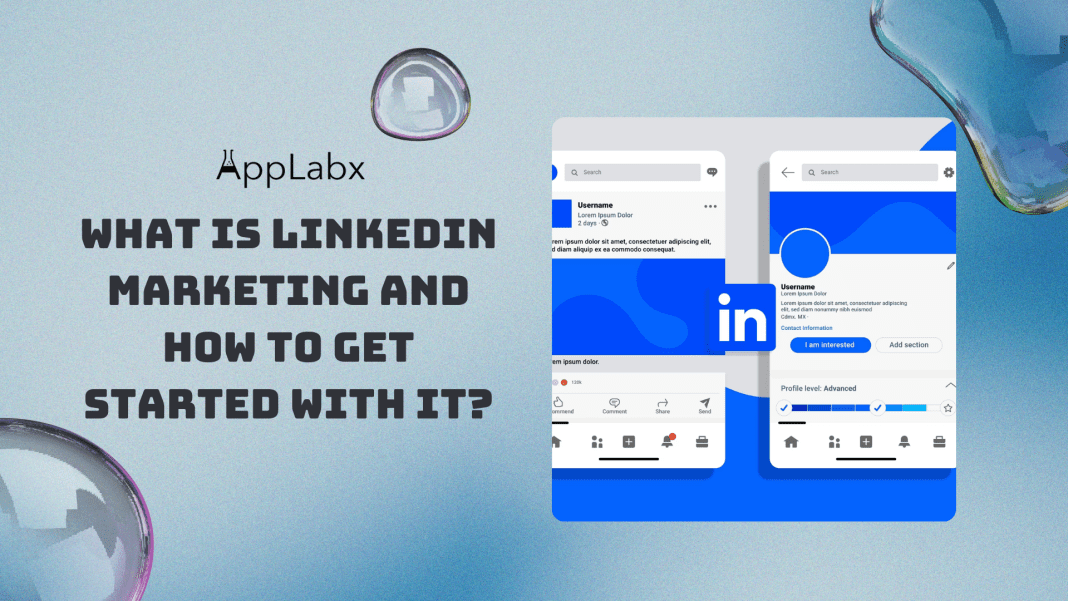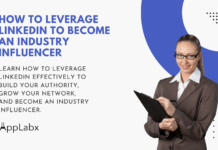Key Takeaways
- Optimize Your Profile for Impact: Elevate your LinkedIn presence by crafting a compelling profile. A well-optimized profile is your digital business card, leaving a lasting impression on your professional network.
- Craft Engaging Content Strategies: Fuel your LinkedIn marketing with strategic content. From thought-provoking articles to eye-catching visuals, a robust content strategy is the key to fostering connections, engagement, and brand resonance.
- Stay Updated and Adapt: LinkedIn is a dynamic platform, constantly evolving. Stay ahead by embracing trends like LinkedIn Live, Stories, and native video content. Adapt your strategies based on data-driven insights and continuous learning for sustained success.
In the fast-paced digital landscape where professional networking and brand promotion have become paramount, LinkedIn emerges as a powerhouse for businesses and individuals alike.
As we navigate the intricacies of the contemporary business ecosystem, harnessing the potential of LinkedIn marketing stands out as a strategic imperative.
In this comprehensive guide, we unravel the multifaceted realm of “LinkedIn Marketing” and provide you with a roadmap to not only understand its nuances but also master the art of leveraging this platform for unparalleled business growth.

The Rise of LinkedIn: More Than Just a Professional Network
LinkedIn, often dubbed the “professional social network,” has transcended its origins as a digital resume repository.
Its user base spans industries, professions, and geographical boundaries, making it a melting pot of opportunities for businesses to connect, engage, and flourish.
The Essence of LinkedIn Marketing
LinkedIn marketing, at its core, is the strategic use of the platform’s features to enhance brand visibility, foster industry influence, and drive targeted business outcomes.
Whether you’re an entrepreneur looking to establish thought leadership or a company seeking to expand its market reach, LinkedIn provides a fertile ground for cultivating professional relationships and amplifying your unique value proposition.
Why LinkedIn? Unpacking the Distinctive Features
Before delving into the ‘how,’ it’s imperative to understand the ‘why’ behind choosing LinkedIn as a marketing stronghold.
LinkedIn’s distinct features set it apart from other social platforms, making it an indispensable tool for professionals and businesses.
From its professional user base to the robust company pages, and the intricate web of industry-focused groups, LinkedIn offers a plethora of avenues for marketers to strategically position themselves.
Getting Started: Crafting Your LinkedIn Marketing Foundation
Embarking on a LinkedIn marketing journey requires a thoughtful and well-executed approach.
you’re a LinkedIn novice or a seasoned user, optimizing your profile is the crucial first step.
From curating an attention-grabbing headline to strategically placing keywords, we’ll guide you through the process of transforming your LinkedIn profile into a powerful marketing asset.
Beyond Personal Branding: Building a Robust Company Presence
As we navigate the LinkedIn marketing terrain, we’ll unravel the importance of a compelling company page. Beyond serving as a digital storefront, a well-crafted company page becomes a magnet for potential clients, collaborators, and employees.
We’ll explore the elements of an effective company page, from visually appealing multimedia to compelling content that resonates with your target audience.
Navigating the Content Cosmos: Your Ultimate LinkedIn Marketing Arsenal
In the digital era, content is the linchpin of any successful marketing strategy.
Unleashing the full potential of LinkedIn marketing involves tailoring your content to captivate and resonate with your audience.
From deciphering the art of crafting engaging posts to diving into the world of long-form articles and impactful videos, we’ll equip you with the tools to create a diverse and compelling content portfolio.
The Power of Connection: Networking and Engagement Strategies
LinkedIn is, at its core, a social network, and the currency of this network is connection.
Building a strategic network involves more than just accumulating connections—it’s about cultivating meaningful relationships.
We’ll explore the art of networking on LinkedIn, from expanding your connections strategically to engaging with your network through comments, likes, and shares.
As we embark on this exploration of LinkedIn marketing, the significance of understanding the platform’s advertising options cannot be overstated.
From sponsored content to targeted advertising campaigns, we’ll demystify the intricacies of LinkedIn advertising, empowering you to make informed decisions that align with your marketing objectives.
Unlocking Insights: Harnessing the Power of LinkedIn Analytics
In the realm of digital marketing, data is the compass that guides decision-making. LinkedIn provides a suite of analytics tools to track and measure the performance of your marketing efforts.
From deciphering engagement metrics to understanding the demographics of your audience, we’ll delve into the world of LinkedIn analytics, arming you with insights to refine your strategy and maximize impact.
The Ever-Evolving Landscape: Staying Ahead with LinkedIn Marketing Trends
In a digital landscape characterized by constant evolution, staying abreast of the latest trends is imperative. We’ll explore the ever-changing dynamics of LinkedIn marketing, from algorithm updates to emerging features.
Armed with this knowledge, you’ll be equipped to adapt and innovate, ensuring that your LinkedIn marketing strategy remains not just relevant but ahead of the curve.
But, before we venture further, we like to share who we are and what we do.
About AppLabx
From developing a solid marketing plan to creating compelling content, optimizing for search engines, leveraging social media, and utilizing paid advertising, AppLabx offers a comprehensive suite of digital marketing services designed to drive growth and profitability for your business.
AppLabx is well known for helping companies and startups use LinkedIn Marketing to drive web traffic to their websites and web apps.
At AppLabx, we understand that no two businesses are alike. That’s why we take a personalized approach to every project, working closely with our clients to understand their unique needs and goals, and developing customized strategies to help them achieve success.
If you need a digital consultation, then send in an inquiry here.
What Is LinkedIn Marketing and How to Get Started With It?
- Understanding LinkedIn as a Marketing Platform
- Setting Up Your LinkedIn Profile for Marketing Success
- Building a Strong LinkedIn Company Page
- Content Strategy for LinkedIn Marketing
- Networking and Engagement on LinkedIn
- LinkedIn Advertising Options
- Utilizing LinkedIn Analytics
- Staying Updated with LinkedIn Marketing Trends
1. Understanding LinkedIn as a Marketing Platform
In the vast expanse of digital marketing, LinkedIn emerges not just as a networking platform but as an invaluable terrain for businesses to establish their digital presence, engage with professionals, and cultivate meaningful connections.
Let’s delve into the intricacies of why LinkedIn is not just a social network but a dynamic marketing platform that demands attention.
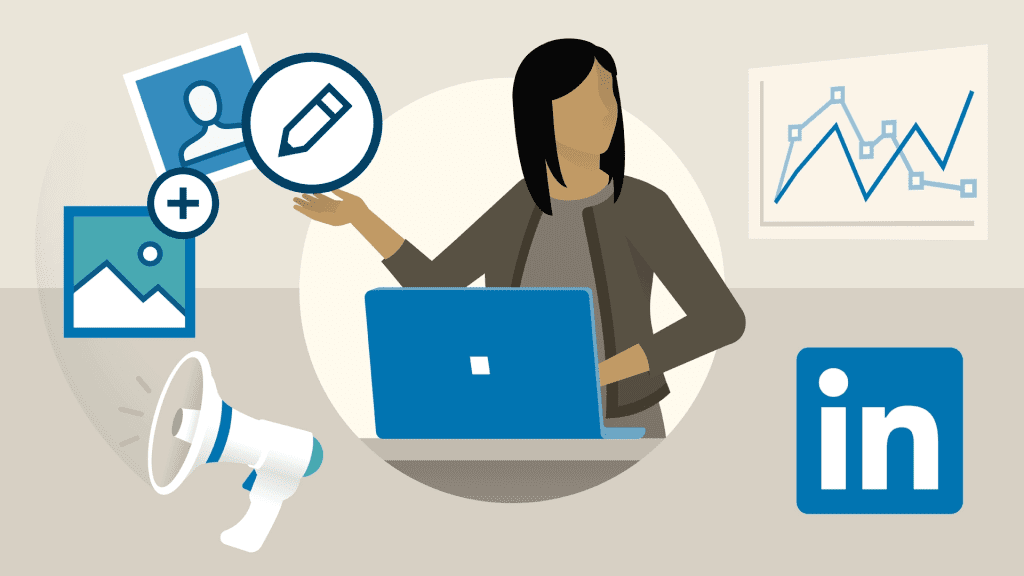
The Global Reach and User Demographics of LinkedIn
LinkedIn boasts 1 billion members in more than 200 countries and territories worldwide.
This extensive reach makes it an unparalleled platform for businesses aiming to tap into diverse markets and connect with professionals across industries.
The Professional Nature of LinkedIn Users
Unlike other social platforms, LinkedIn users are actively seeking professional connections, making it an environment conducive to B2B interactions.
Over 40 million students and recent college graduates have a presence on LinkedIn, providing a unique opportunity for businesses to engage with the future workforce.
LinkedIn’s Evolution Beyond a Digital Resume Repository
While LinkedIn initially gained prominence as a platform for job seekers and recruiters, its evolution into a content-sharing hub has transformed it into a comprehensive marketing tool.
The introduction of features like LinkedIn Stories, Articles, and Live Video has turned the platform into a dynamic space for brands to showcase their expertise and engage with their audience.
The Power of LinkedIn Company Pages
LinkedIn Company Pages serve as digital storefronts, offering businesses the opportunity to showcase their brand identity, values, and offerings.
These pages are not just static representations but dynamic spaces that facilitate engagement and communication.
Example:
Microsoft, one of the world’s largest and most successful technology companies, strategically utilizes its LinkedIn Company Page to share thought leadership content, job openings, and product updates.
With over 21 million followers, Microsoft’s LinkedIn presence plays a pivotal role in its overall digital marketing strategy.
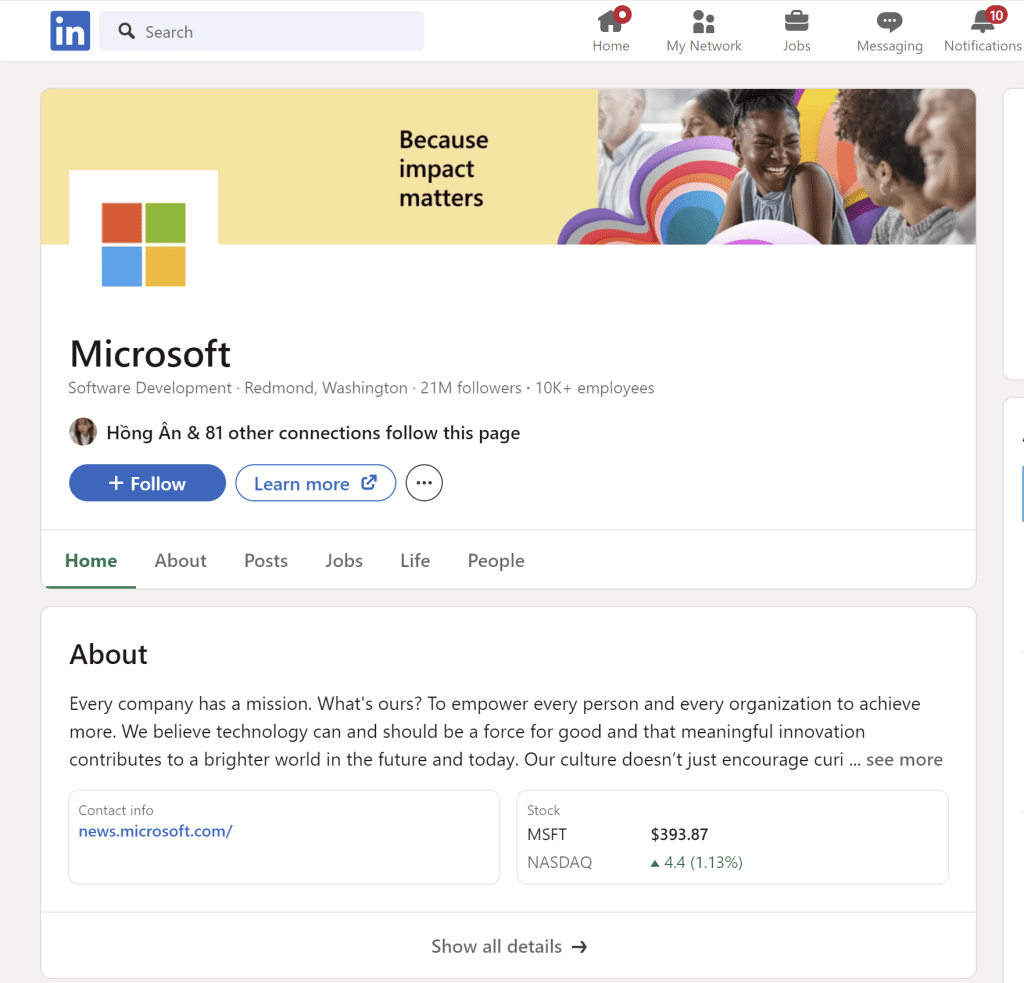
Industry-Focused LinkedIn Groups
LinkedIn Groups provide a niche space for professionals to connect, share insights, and discuss industry trends.
Joining and actively participating in these groups can be a strategic move for businesses to establish themselves as industry leaders and build a targeted audience.
Engagement and Interaction Dynamics on LinkedIn
Understanding the engagement dynamics on LinkedIn is crucial for effective marketing. The platform’s algorithm prioritizes content that sparks meaningful conversations and interactions. Likes, comments, and shares play a pivotal role in increasing the visibility of content.
2. Setting Up Your LinkedIn Profile for Marketing Success
In the realm of LinkedIn marketing, your individual profile serves as the cornerstone of your online presence.
A strategically optimized LinkedIn profile not only enhances your personal brand but also acts as a powerful tool for networking, engagement, and professional visibility.
This comprehensive guide explores the essential elements and tactics for setting up your LinkedIn profile for marketing success.

The Strategic Importance of a Robust LinkedIn Profile
A well-crafted LinkedIn profile is more than an online resume; it’s a dynamic representation of your professional journey, skills, and expertise.
As LinkedIn continues to be a pivotal platform for business professionals, ensuring your profile stands out is crucial for making meaningful connections and leveraging marketing opportunities.
- Profiles with professional photos receive up to 14 times more impressions.
- Users with complete profiles are 40 times more likely to receive opportunities through LinkedIn than those with incomplete ones.
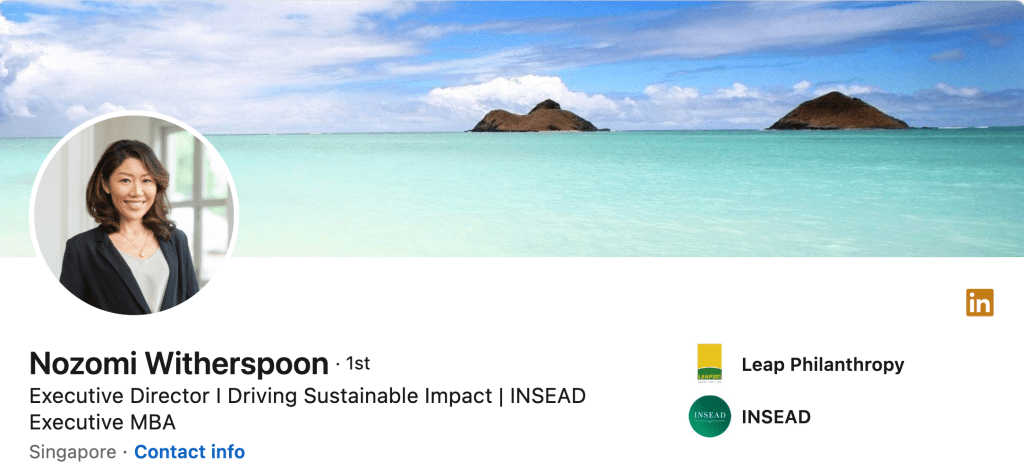
Optimizing Your Profile Picture and Headline
Your profile picture and headline are the first elements visitors notice.
Optimizing these components is essential for making a strong and memorable first impression.
Profile Picture
- Use a high-resolution, professional headshot.
- Ensure the image is clear, well-lit, and portrays a friendly yet professional demeanor.
Headline
- Craft a compelling headline that succinctly summarizes your professional identity.
- Incorporate keywords relevant to your industry or expertise for improved search visibility.
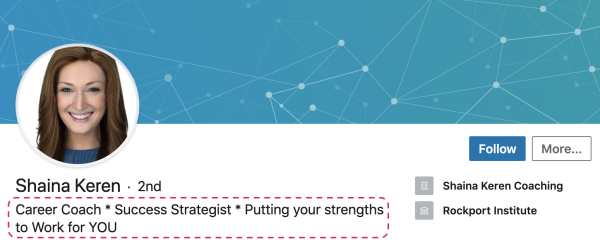
Crafting a Compelling Summary and About Section
The summary section is your opportunity to narrate your professional story and highlight your unique value proposition. It’s the ideal space to showcase your personality and passion for your industry.
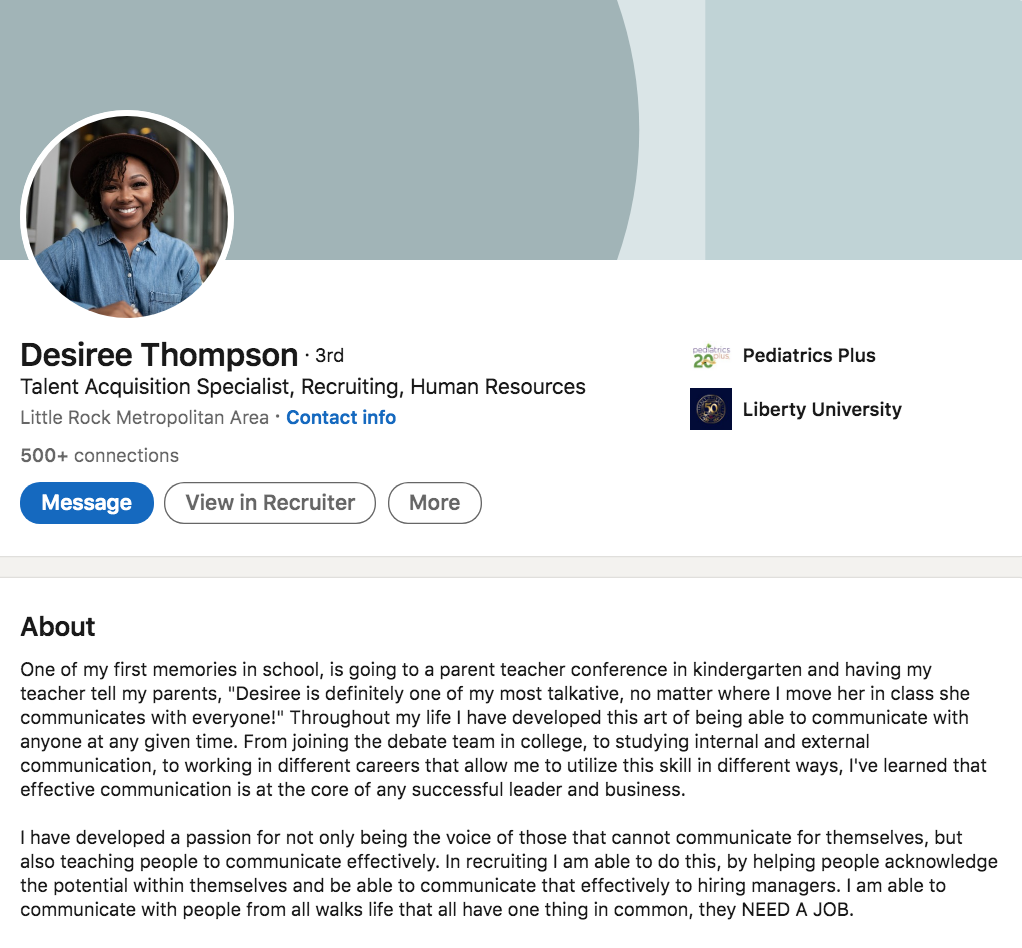
Summary
- Write a concise and engaging summary that captures your career journey and aspirations.
- Focus on achievements, skills, and the value you bring to your industry or profession.
About Section
- Utilize the About section to provide additional context and detail about your professional background.
- Highlight key accomplishments, experiences, and areas of expertise.
Showcasing Work Experience and Achievements
Your work experience is a critical component of your LinkedIn profile. Optimize this section to not only list your roles but to demonstrate the impact you’ve made in each position.
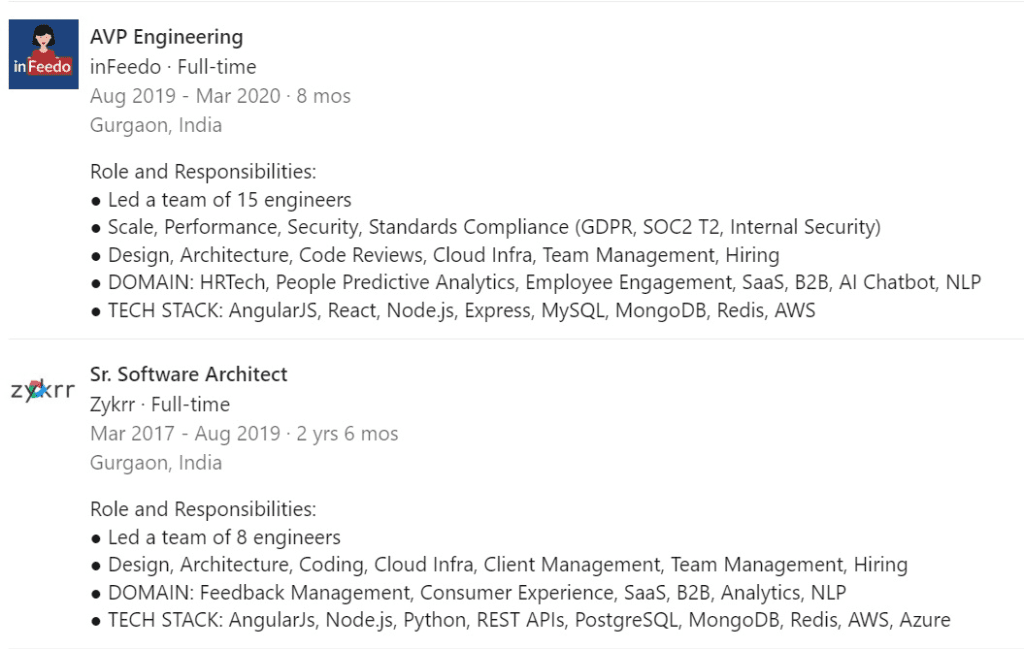
Work Experience
- Use action verbs to describe your responsibilities and achievements in each role.
- Quantify achievements with numbers, percentages, or relevant metrics.
Achievements and Projects
- Highlight key projects, initiatives, or accomplishments in separate sections.
- Include multimedia elements such as images or documents to provide tangible evidence of your work.
Endorsements and Skills for Credibility
Endorsements and skills provide social proof of your expertise. Strategically curate this section to showcase your strengths and build credibility with your network.

Skills
- Select skills that align with your professional strengths.
- Aim for a mix of hard skills and soft skills to present a well-rounded professional profile.
Endorsements
- Request endorsements from colleagues, clients, or peers who can vouch for your skills.
- Reciprocate by endorsing others to foster a collaborative networking environment.
Utilizing Recommendations and Testimonials
Recommendations offer a qualitative dimension to your profile. Request and provide thoughtful recommendations to enhance your professional credibility.
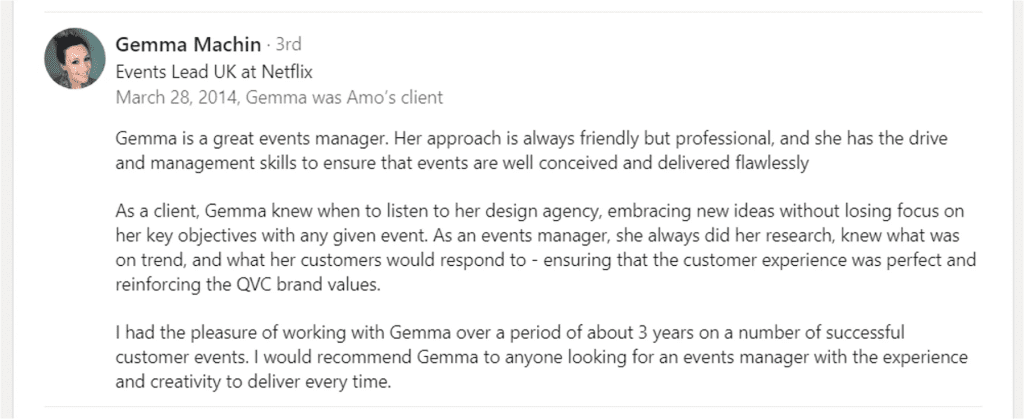
Engaging with Rich Media and Publications
LinkedIn allows you to showcase your expertise through rich media such as articles, presentations, and publications. Leverage this feature to amplify your thought leadership and showcase your work.
Publications
- Link articles, blog posts, or whitepapers you’ve authored.
- Share research or publications you’ve contributed to for added credibility.
Multimedia Content
- Embed videos, presentations, or infographics to showcase your work visually.
- Use compelling visuals to capture the attention of profile visitors.
3. Building a Strong LinkedIn Company Page
In the realm of LinkedIn marketing, your company page serves as the virtual face of your brand.
It’s not merely a static entity but a dynamic representation that can significantly impact brand perception, engagement, and conversion.
In this extensive guide, we’ll explore the key elements and strategies for crafting a compelling LinkedIn Company Page that not only attracts attention but also drives meaningful interactions.
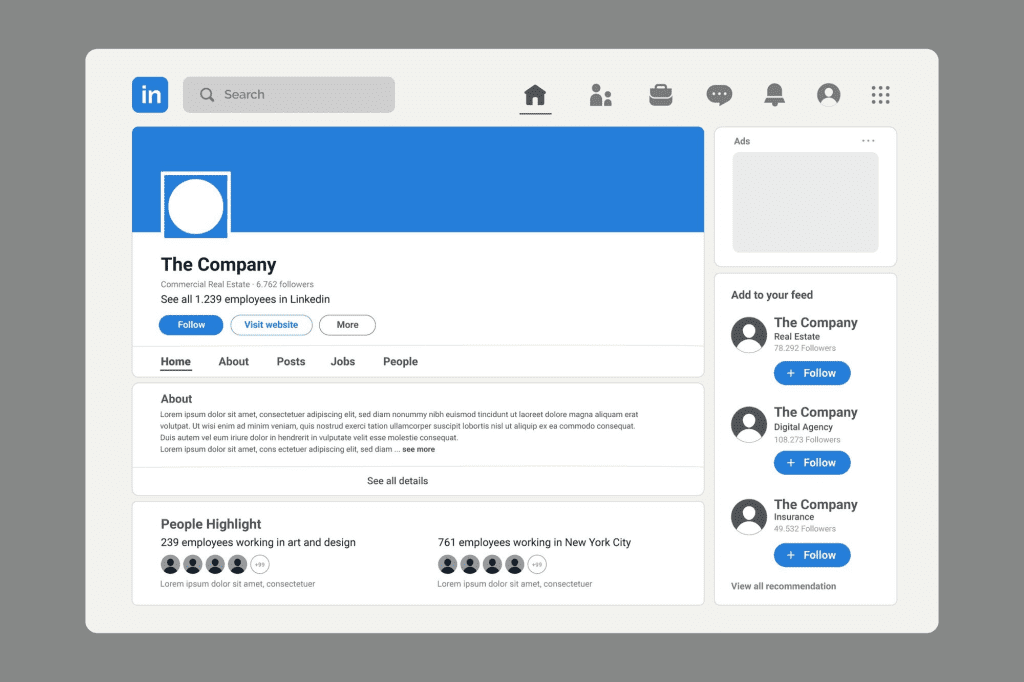
The Importance of a Robust LinkedIn Company Page
A LinkedIn Company Page is more than just a digital brochure; it’s an interactive space where businesses can establish their brand identity, communicate their values, and showcase their products or services.
A well-optimized company page is a vital component of an effective LinkedIn marketing strategy.
Pages with complete information get 30% more weekly views.
Optimizing the Basics: Profile Picture, Banner Image, and Company Description
Your company’s visual representation on LinkedIn is the first impression users receive.
Optimizing these fundamental elements is crucial for making your page visually appealing and informative.
Profile Picture
- Upload a high-resolution logo that reflects your brand identity.
- Ensure the image is clear, recognizable, and fits within LinkedIn’s recommended dimensions (400 x 400 pixels).
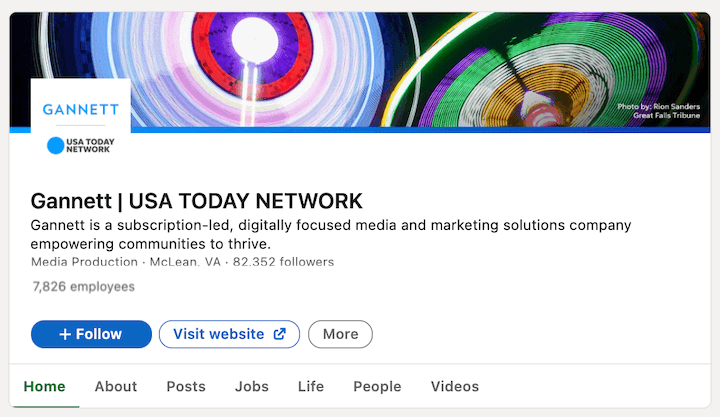
Banner Image
- Use a visually striking banner that complements your brand.
- Highlight key offerings or showcase your team to add a human touch.
- Optimal dimensions for banner images are 1128 x 191 pixels.
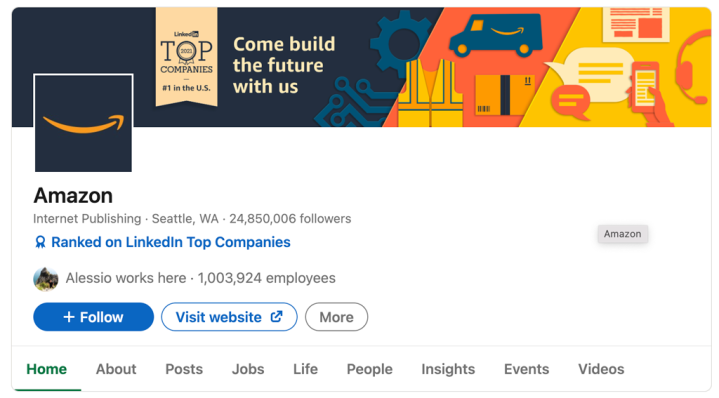
Company Description
- Craft a concise and compelling company description.
- Clearly articulate your value proposition, mission, and key offerings.
- Incorporate relevant keywords for improved discoverability.

Showcasing Products and Services
LinkedIn allows companies to showcase their products and services directly on the company page. This feature enables businesses to provide detailed information about offerings, fostering transparency and trust.
Example: Salesforce effectively utilizes the “Products and Services” section on its LinkedIn Company Page to showcase its diverse range of cloud-based solutions.

Leveraging Multimedia: Images, Videos, and Documents
Visual content is a powerful tool for engagement. Incorporate multimedia elements to make your company page more dynamic and captivating.
Images
- Share high-quality images that highlight your company culture, events, or products.
- Use images to convey your brand story and create a visually appealing page.
Videos
Embed promotional videos, product demonstrations, or behind-the-scenes footage.
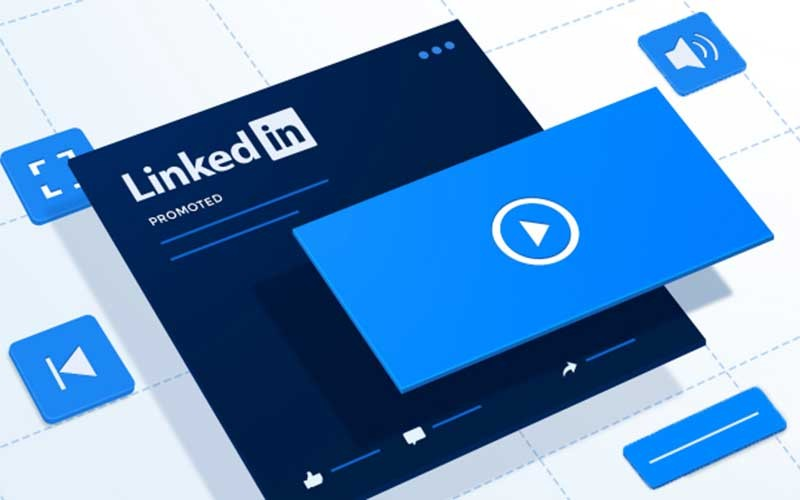
Documents
- Upload PDFs, whitepapers, or case studies to provide in-depth information.
- Enhance credibility by sharing valuable resources that showcase your expertise.
Employee Advocacy and Team Showcase
Humanizing your brand by featuring your team members not only adds a personal touch but also strengthens your company’s credibility and authenticity.
Employee Advocacy
- Encourage employees to connect their profiles to the company page.
- Leverage their networks for increased reach and engagement.
Team Showcase
- Use the “Life” tab to showcase your company culture, values, and employee stories.
- Highlight team achievements and milestones to build a positive brand image.
Engaging Content Strategy
A strong LinkedIn Company Page is not just about static information; it’s a platform for ongoing communication. Develop a content strategy that resonates with your audience and showcases your industry expertise.
Regular Updates
- Share company news, industry insights, and updates to keep your audience informed.
- Consistency is key; aim for regular updates to maintain an active presence.
Thought Leadership
- Publish long-form articles on relevant industry topics to establish thought leadership.
- Position your company as a knowledgeable and authoritative voice within your sector.
Employee-Generated Content
- Encourage employees to contribute content, sharing their insights and experiences.
- Employee-generated content adds a personal touch and authenticity to your page.
Utilizing LinkedIn Analytics for Optimization
LinkedIn provides robust analytics tools for company pages, offering insights into audience demographics, engagement metrics, and content performance.
4. Content Strategy for LinkedIn Marketing
Crafting a compelling content strategy is paramount for success on LinkedIn, where professionals converge to network, share insights, and stay informed.
In this extensive guide, we’ll delve into the intricacies of developing a robust content strategy that not only captivates your audience but also positions your brand as a thought leader in your industry.

Understanding Your Target Audience
Before embarking on any content strategy, a deep understanding of your target audience is essential.
LinkedIn’s diverse user base includes professionals from various industries, and tailoring your content to resonate with your specific audience is key.

Audience Segmentation
- Identify and segment your target audience based on industry, job roles, and interests.
- Craft content that speaks directly to the pain points, challenges, and interests of each segment.
Utilize LinkedIn Analytics
- Leverage LinkedIn Analytics to gather insights on your audience demographics and engagement patterns.
- Analyze data to refine your content strategy based on what resonates most with your audience.
Diverse Content Formats for Maximum Impact
LinkedIn supports various content formats, each offering a unique way to engage your audience. A well-rounded strategy incorporates a mix of text, images, videos, and long-form content.

Text Posts
- Craft concise, impactful text posts that convey your message clearly.
- Use hashtags to increase the discoverability of your posts.
Visual Content
- Share eye-catching images, infographics, and slideshows to convey information.
- Visual content tends to get more engagement than text-only posts.
Videos
- Utilize native LinkedIn videos to share product demos, behind-the-scenes glimpses, or industry insights.
- LinkedIn videos earn an average of three times the engagement of text posts.
Long-Form Articles
- Publish in-depth articles showcasing your expertise and insights.
- Articles contribute to establishing thought leadership and authority within your industry.
Aligning Content with Business Objectives
A successful content strategy aligns closely with your overarching business goals. Whether it’s brand awareness, lead generation, or driving website traffic, your content should serve a specific purpose.
Brand Awareness
- Share compelling brand stories, company achievements, and culture highlights.
- Utilize visual content to create a strong brand identity.
Thought Leadership
- Publish insightful articles, commentary on industry trends, and thought-provoking content.
- Engage in discussions and contribute to relevant LinkedIn groups to showcase expertise.
Lead Generation
- Create content that addresses the common pain points of your target audience.
- Incorporate clear calls-to-action (CTAs) to encourage lead generation.
Leveraging LinkedIn Native Features
LinkedIn provides native features that can enhance the visibility and reach of your content. Understanding and strategically utilizing these features can amplify your content marketing efforts.
LinkedIn Stories
- Leverage LinkedIn Stories to share behind-the-scenes content, event highlights, or short-form updates.
- Stories appear at the top of users’ feeds, increasing visibility.
LinkedIn Live
- Host live sessions for Q&A sessions, product launches, or industry discussions.
- LinkedIn Live videos get, on average, seven times more reactions and 24 times more comments than native videos produced by the same.
Hashtags
- Incorporate relevant hashtags to broaden the reach of your content.
- Follow trending hashtags within your industry to stay updated and participate in relevant conversations.
Engaging Your Audience Effectively
Engagement is the lifeblood of any content strategy. Encouraging likes, comments, and shares boosts your content’s visibility and fosters a sense of community.
Ask Questions
- Pose questions to encourage audience interaction.
- Respond promptly to comments to nurture ongoing discussions.
Employee Advocacy
- Encourage employees to share and engage with your content.
- Leverage the collective reach of your team for broader visibility.
Contests and Challenges
- Organize contests or challenges to spark engagement.
- Create a dedicated hashtag to track participation and entries.
Measuring Success with Analytics
LinkedIn provides robust analytics tools to measure the performance of your content. Regularly analyzing these metrics helps refine and optimize your content strategy.
Key Metrics
- Monitor engagement metrics such as likes, comments, and shares.
- Track click-through rates for links and conversion metrics for lead generation.
LinkedIn Analytics
- Utilize LinkedIn Analytics to gain insights into the demographics of your audience and the performance of your content over time.
- Identify high-performing content and replicate successful strategies.
5. Networking and Engagement on LinkedIn
As the premier professional networking platform, LinkedIn offers unparalleled opportunities for individuals and businesses to connect, engage, and foster meaningful relationships.
This comprehensive guide explores the strategies and tactics for effective networking and engagement on LinkedIn, underlining the importance of building a robust professional presence.

The Power of Strategic Networking
Strategic networking on LinkedIn is not just about accumulating connections; it’s about cultivating meaningful relationships that can lead to collaborations, partnerships, and professional growth.
Strategic Connection Requests
- Personalize connection requests to provide context for your connection.
- Clearly state why you want to connect and how the connection can be mutually beneficial.
Engaging with Targeted Connections
- Identify and engage with professionals in your industry or niche.
- Like, comment, and share their content to initiate conversations and establish rapport.
Leveraging LinkedIn Groups for Targeted Interaction
LinkedIn Groups provide a focused space for professionals with similar interests to connect, share insights, and engage in discussions.
Joining Relevant Groups
- Identify and join LinkedIn Groups aligned with your industry or professional interests.
- Actively participate in discussions and share valuable insights to establish your expertise.
Creating and Managing Groups
- Consider creating your own LinkedIn Group to build a community around a specific topic.
- Nurture group engagement by sharing relevant content and facilitating discussions.
Optimizing Your LinkedIn Profile for Networking
Your LinkedIn profile serves as your digital business card. Optimizing it for networking involves presenting a professional image and showcasing your skills and accomplishments.
Profile Visibility
- Set your profile to “Public” to maximize visibility.
- Regularly update your profile with recent accomplishments and experiences.
Endorsements and Recommendations
- Request and provide endorsements to showcase your skills and credibility.
- Seek recommendations from colleagues, clients, or supervisors to add depth to your profile.
Engagement Strategies for LinkedIn Success
Engagement is the heartbeat of LinkedIn networking. The more actively you engage with your network, the stronger your professional relationships become.
Content Engagement
- Like, comment, and share content from your network to stay visible.
- Craft thoughtful comments that contribute to discussions and showcase your insights.
Sharing Valuable Content
- Share content that is relevant to your industry or expertise.
- Use a mix of text, images, and videos to diversify your content and cater to different preferences.
Building Thought Leadership Through Publishing
Publishing long-form content on LinkedIn positions you as a thought leader in your field. This can elevate your profile and attract meaningful connections.
Thoughtful Articles
- Write and publish articles that showcase your expertise.
- Share industry insights, success stories, or actionable tips to provide value to your network.
Consistent Publishing Schedule:
- Develop a consistent publishing schedule to maintain visibility.
- Share your articles across relevant LinkedIn Groups to expand your reach.
Strategies for Effective Personal Branding
Your personal brand is the essence of your professional identity. Strategic networking and engagement contribute to the development of a strong and positive personal brand on LinkedIn.
Professional Headline and Summary
- Craft a compelling professional headline that communicates your expertise.
- Write a concise and engaging summary that reflects your professional journey and aspirations.
Visual Branding
- Use a professional profile picture that aligns with your personal brand.
- Ensure consistency in visual elements across your profile, such as banner images and featured content.
6. LinkedIn Advertising Options
LinkedIn, with its expansive professional user base, offers a robust suite of advertising options tailored for businesses seeking to target a professional audience.
This comprehensive guide explores the various LinkedIn advertising options, providing insights, examples, and key data to help businesses make informed decisions.

Understanding LinkedIn Advertising
LinkedIn advertising allows businesses to create targeted campaigns, reaching professionals based on their job titles, industries, company sizes, and more. The platform offers a variety of ad formats to cater to different marketing objectives.
Why Advertise on LinkedIn?
- LinkedIn has about 1 billion members in more than 200 countries and territories worldwide.
- 75% of B2B marketers choose LinkedIn over other social media platforms for paid media.
LinkedIn’s Unique Targeting Capabilities:
- Targeting options include job title, company size, industry, seniority, and more.
- This precision targeting allows advertisers to reach specific professionals, ensuring their ads are seen by decision-makers.
LinkedIn Sponsored Content
Sponsored Content appears directly in users’ LinkedIn feeds, allowing businesses to promote articles, images, and videos to a targeted audience.
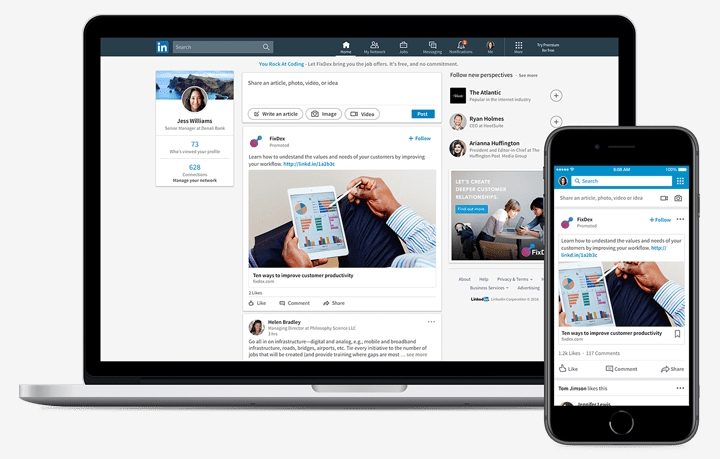
Content Promotion
- Amplify your content by promoting LinkedIn posts to a wider audience.
- Sponsored Content is an effective way to increase brand awareness and engagement.
Dynamic Ads
- Dynamic Ads personalize content for each viewer based on their LinkedIn profile.
- These ads are particularly effective for personalized lead-generation campaigns.
LinkedIn Sponsored InMail
Sponsored InMail allows advertisers to send personalized messages directly to users’ LinkedIn inboxes.
Personalized Messaging
- Craft personalized messages tailored to your target audience.
- Sponsored InMail is effective for promoting events, webinars, or personalized offers.
Conversion Tracking
- Use LinkedIn’s conversion tracking to measure the effectiveness of your Sponsored InMail campaigns.
- Track metrics such as lead generation, website visits, and conversions.
LinkedIn Display Ads
Display Ads appear on the right side of users’ LinkedIn feeds and are suitable for brand awareness and visibility.
Image and Text Ads
- Create visually appealing display ads with a combination of images and text.
- Display Ads are suitable for promoting events, and products, or building brand awareness.
Targeted Display Ads
- Utilize targeting options to ensure your Display Ads reach the most relevant audience.
- A/B testing different creatives and ad copy can optimize performance.
LinkedIn Video Ads
Video Ads on LinkedIn allow businesses to tell their stories through engaging visual content.
Native Video Content
Create compelling videos that resonate with your target audience.
Brand Awareness through Video
- Use Video Ads to boost brand awareness and showcase your products or services.
- Incorporate subtitles for better accessibility.
LinkedIn Carousel Ads
Carousel Ads allow businesses to showcase multiple images or videos within a single ad unit.
Storytelling through Carousel
- Use Carousel Ads to tell a cohesive story or showcase a range of products.
- Each card in the carousel can have its own link, providing flexibility for promoting different offerings.
Interactive and Engaging
- Encourage users to swipe through the carousel for an interactive experience.
- Carousel Ads are effective for product launches or highlighting key features.
LinkedIn Ad Targeting Options
LinkedIn’s robust targeting options enable advertisers to reach specific professional audiences, ensuring their ads are seen by decision-makers.
Job Title Targeting
- Target professionals based on their specific job titles.
- Ideal for reaching individuals with decision-making authority.
Company Size and Industry Targeting
- Tailor your ads based on the size and industry of the target companies.
- Effective for B2B marketing and industry-specific campaigns.
LinkedIn Audience Network
- Extend your reach beyond LinkedIn by displaying ads on partner sites.
- Leverage the LinkedIn Audience Network for increased visibility.
LinkedIn Advertising Analytics and Measurement
LinkedIn provides analytics tools to measure the performance of your ads, helping you understand their impact and optimize future campaigns.
Key Metrics to Track
- Monitor key metrics such as click-through rate (CTR), engagement, and conversion rates.
- Utilize A/B testing to identify the most effective ad creatives and messaging.
Conversion Tracking
- Set up conversion tracking to attribute specific actions to your LinkedIn ads.
- Understand the ROI of your campaigns by tracking lead generation, website visits, and other conversions.
7. Utilizing LinkedIn Analytics
LinkedIn Analytics provides a wealth of data and insights, allowing users to measure the performance of their activities on the platform.
In this comprehensive guide, we’ll explore the various facets of LinkedIn Analytics, emphasizing the importance of data-driven decision-making for individuals and businesses.

Introduction to LinkedIn Analytics
LinkedIn Analytics offers a comprehensive suite of tools designed to empower users with valuable insights into the performance of their profiles, content, and advertising efforts. Leveraging these analytics can inform strategies, optimize engagement, and drive tangible results.
Accessing LinkedIn Analytics
- LinkedIn Analytics is accessible from both personal profiles and company pages.
- Navigate to the “Analytics” tab to explore a range of performance metrics.
Types of LinkedIn Analytics
- LinkedIn provides analytics for personal profiles, company pages, and sponsored content.
- Personal profiles can analyze profile views, post engagement, and more, while company pages track follower demographics and content performance.
Personal Profile Analytics: Unlocking Insights
LinkedIn Analytics for personal profiles offers a detailed view of how users engage with your content and the impact of your professional presence.
Profile Views and Search Appearances
- Monitor the number of times your profile appears in search results and the total profile views.
- Identify trends and patterns to understand when your profile gains the most visibility.
Top Keywords and Search Queries
- Explore the keywords and search queries that led users to discover your profile.
- Optimize your profile with relevant keywords to enhance discoverability.
Post and Content Analytics: Measuring Engagement
LinkedIn Analytics provides detailed insights into the performance of your posts, helping you understand what resonates with your audience.
Post Views and Engagement
- Track the number of views, likes, comments, and shares for each post.
- Identify high-performing content and analyze audience engagement.
Follower Demographics
- Understand the demographics of your followers, including job titles, industries, and locations.
- Tailor your content to align with the interests of your specific audience.
Best Time to Post
- Analyze the time and day when your posts receive the highest engagement.
- Schedule posts during optimal times to maximize visibility and interaction.
Company Page Analytics: Enhancing Brand Visibility
LinkedIn Analytics for company pages offers valuable insights into the performance of your brand presence on the platform.
Follower Growth and Demographics
- Track the growth of your company page followers and analyze their demographics.
- Understand the industries, job functions, and locations of your followers.
Content Engagement
- Measure the performance of your company page content, including likes, comments, and shares.
- Identify top-performing posts and replicate successful content strategies.
Visitor Analytics
- Explore visitor metrics to understand who is visiting your company page.
- Tailor your content to resonate with the interests and preferences of your visitors.
Sponsored Content Analytics: Measuring Advertising Impact
For businesses running sponsored content campaigns, LinkedIn Analytics provides insights into the performance of paid advertising efforts.
Impressions and Click-Through Rates (CTR)
- Monitor the number of impressions your sponsored content receives.
- Analyze the CTR to gauge the effectiveness of your ad in driving user engagement.
Lead Generation Metrics
- Utilize LinkedIn’s lead generation forms and track metrics such as form submissions.
- Measure the impact of sponsored content on lead generation and conversions.
Return on Ad Spend (ROAS)
- Calculate the ROAS by analyzing the performance of your sponsored content against your advertising spend.
- Adjust campaign parameters based on ROAS metrics to optimize budget allocation.
LinkedIn Video Analytics: Measuring Visual Engagement
For users incorporating video content into their LinkedIn strategy, dedicated analytics provide insights into video performance.
Views and Engagement Metrics
- Track the number of views, likes, comments, and shares for each video.
- Understand how your audience engages with your video content.
Retention Rates
- Analyze video retention rates to identify at which point viewers drop off.
- Optimize video content based on insights to maintain viewer engagement.
Conversion Tracking for Video Ads
- Implement conversion tracking for video ads to measure the impact on lead generation.
- Connect video performance directly to desired actions, such as website visits or form submissions.
Utilizing LinkedIn Analytics for Continuous Improvement
LinkedIn Analytics is a dynamic tool that requires ongoing analysis and adaptation. Regularly reviewing insights and making data-driven decisions are key to optimizing your LinkedIn presence.
Periodic Performance Reviews
- Schedule regular reviews of your LinkedIn Analytics to identify trends and patterns.
- Use historical data to measure progress and make informed adjustments.
A/B Testing for Optimization
- Implement A/B testing for different content formats, posting times, and ad creatives.
- Evaluate the performance of variations to refine your strategy.
Benchmarking Against Industry Standards
- Compare your analytics metrics with industry benchmarks.
- Identify areas where you excel and areas for improvement based on industry standards.
8. Staying Updated with LinkedIn Marketing Trends
In the ever-evolving landscape of digital marketing, staying abreast of the latest trends is crucial, especially on a platform as dynamic as LinkedIn.
This comprehensive guide outlines effective strategies for staying updated with LinkedIn marketing trends, incorporating relevant examples, and backed by verified data.

Importance of Following LinkedIn Marketing Trends
LinkedIn, as a professional networking platform, undergoes constant changes and innovations. Staying informed about the latest trends ensures that your marketing strategies remain relevant and effective in reaching your target audience.
Dynamic Nature of LinkedIn
- LinkedIn regularly introduces new features, algorithm updates, and content formats.
- Adapting to these changes ensures your marketing efforts align with the platform’s evolving dynamics.
Competitive Edge
- By embracing trends early, you gain a competitive edge by being at the forefront of innovation.
- Staying ahead of the curve allows you to differentiate your brand and engage your audience more effectively.
Monitoring LinkedIn Algorithm Changes
LinkedIn’s algorithm plays a pivotal role in content visibility. Keeping track of algorithm updates is essential for optimizing your content strategy.
Content Ranking Factors
- Stay informed about the factors influencing content visibility on LinkedIn.
- LinkedIn’s algorithm considers factors such as engagement, relevance, and recency in determining content rankings.
Adapting to Algorithm Shifts
- Adjust your content strategy based on algorithm updates to maintain optimal visibility.
- For instance, if the algorithm prioritizes video content, incorporate more videos into your marketing strategy.
Example: Video Surge Following Algorithm Update:
- It’s no secret that LinkedIn loves video content, resulting in a significant increase in video engagement.
- Brands quick to adapt experienced heightened visibility and engagement.
LinkedIn Live: Embracing Real-Time Engagement
LinkedIn Live, the platform’s live streaming feature, has become a prominent trend for fostering real-time engagement.
Interactive Content
Incorporate live video sessions to interact with your audience in real-time.
Event Broadcasting
- Use LinkedIn Live to broadcast events, webinars, and product launches.
- Engage with your audience through Q&A sessions, polls, and real-time discussions.
LinkedIn Stories: Crafting Ephemeral Content
LinkedIn Stories, inspired by the success of similar features on other platforms, provides a new avenue for sharing timely and engaging content.
Day-in-the-Life Content
- Share behind-the-scenes glimpses, a day in the life, or quick updates through Stories.
- Stories appear at the top of users’ feeds, providing a prime location for visibility.
Fostering Authenticity
- Use Stories to showcase the human side of your brand or share employee highlights.
- Authenticity in storytelling through Stories resonates with the LinkedIn audience.
Native Video Content: Driving Engagement
The prevalence of video content continues to grow, and leveraging native videos on LinkedIn is essential for maintaining high engagement.
Short-Form and Long-Form Videos
- Experiment with both short-form and long-form video content.
- Short videos are effective for quick updates, while long-form videos allow for in-depth exploration of topics.
Educational Content
- Create videos that provide value and insights relevant to your industry.
- Educational content tends to perform well, positioning your brand as an authority.
LinkedIn Polls: Encouraging Audience Interaction
LinkedIn Polls provide a simple yet effective way to engage your audience, gather feedback, and understand their preferences.
Industry Surveys and Feedback
- Create polls related to industry trends, asking for opinions and feedback.
- Use polls to gauge audience sentiment on relevant topics.
Audience Participation
- Encourage your audience to participate in polls by posing interesting and relevant questions.
- Share the poll results and insights to spark further discussion.
LinkedIn Events: Maximizing Virtual Engagement
LinkedIn Events enable businesses to host and promote virtual events, fostering community engagement.
Webinars, Summits, and Product Launches:
- Utilize LinkedIn Events to promote webinars, industry summits, and product launches.
- Leverage the platform’s professional audience for event participation.
Networking Opportunities:
- Capitalize on the networking features within LinkedIn Events.
- Encourage attendees to connect with each other and participate in discussions.
Utilizing Hashtags Strategically
Hashtags play a crucial role in content discoverability on LinkedIn. Strategic use of hashtags can significantly boost the reach of your content.
Relevant Industry Hashtags
- Incorporate relevant industry-specific hashtags to increase content visibility.
- Follow trending hashtags within your industry to stay updated.
Branded Hashtags
- Create and promote branded hashtags to encourage community engagement.
- Branded hashtags foster a sense of community around your brand.
Data-Driven Insights: Leveraging Analytics for Trends
Utilizing LinkedIn Analytics is paramount for understanding the effectiveness of your strategies and staying informed about trends that resonate with your audience.
Analytics Review
- Regularly review LinkedIn Analytics to identify trends in post engagement, follower growth, and content performance.
- Use data to refine your content strategy based on what resonates most with your audience.
Benchmarking Against Industry Trends
- Compare your analytics metrics with industry benchmarks to gauge performance.
- Identify areas for improvement by aligning your strategies with successful trends in your industry.
Conclusion
Unlocking LinkedIn’s Potential: The Power of LinkedIn Marketing
In conclusion, our exploration of “What Is LinkedIn Marketing and How to Get Started With It?” emphasizes the transformative potential of LinkedIn as a dynamic marketing platform.
It’s not just a virtual resume repository; it’s a bustling ecosystem where professionals converge, creating opportunities for brand elevation, targeted engagement, and meaningful connections.
By understanding the significance of LinkedIn marketing, one can harness its multifaceted features for personal branding, B2B networking, and content dissemination.
Crafting a Strong Personal Brand: Your LinkedIn Profile Matters
Your LinkedIn profile is more than just a digital resume; it’s the cornerstone of your personal brand.
Crafting a compelling headline, optimizing your summary, and showcasing your skills contribute to a powerful first impression.
As we conclude, remember that your profile is a dynamic representation of your professional journey, and regular updates are the key to maintaining a strong personal brand on LinkedIn.
Building Compelling Company Pages: Narratives that Captivate Audiences
The journey into LinkedIn marketing involves not just personal branding but also creating compelling narratives for your company. Building a robust LinkedIn Company Page goes beyond showcasing products; it’s about telling a story that captivates your audience.
Content Strategy: The Engine Driving Your Success
Content is the lifeblood of LinkedIn marketing, propelling your strategy forward. Thoughtful articles, engaging videos, and interactive carousel ads are the fuel that keeps the engine running.
Networking and Engagement: A Dance of Connection
LinkedIn’s essence lies in networking, and mastering the art of engagement is pivotal. As we conclude, remember that LinkedIn is not just a platform for static connections; it’s a stage for active engagement.
LinkedIn Advertising: A Strategic Investment for Tangible Returns
In the dynamic landscape of LinkedIn marketing, strategic advertising is a key player. From Sponsored Content to InMail campaigns, these options offer targeted exposure and lead generation possibilities.
Adapting to Trends and Innovations: Staying Ahead in the Game
Our exploration wouldn’t be complete without acknowledging the importance of staying updated with LinkedIn trends and innovations. Features like LinkedIn Live, Stories, native video content, polls, and events have reshaped the platform.
As we conclude, recognize that embracing these trends isn’t just about staying relevant; it’s about actively engaging your audience and crafting a dynamic presence.
Leveraging Data-Driven Insights: Navigating with Precision
In the world of LinkedIn marketing, analytics serve as your compass, guiding your journey. Regular reviews of LinkedIn Analytics provide a roadmap for continuous improvement.
In this final stretch, it’s clear that success on LinkedIn is a personalized narrative, not a one-size-fits-all approach.
As we conclude, remember that LinkedIn marketing is a journey of evolution, transforming your profile from a digital placeholder into a dynamic showcase.
It’s a journey where you don’t just follow trends; you shape them. So, embark on your LinkedIn marketing journey with confidence, creativity, and a commitment to continuous improvement.
Here’s to your mastery of LinkedIn and the boundless opportunities that await in the professional digital landscape.
If you are looking for a top-class digital marketer, then book a free consultation slot here.
If you find this article useful, why not share it with your friends and business partners, and also leave a nice comment below?
We, at the AppLabx Research Team, strive to bring the latest and most meaningful data, guides, and statistics to your doorstep.
To get access to top-quality guides, click over to the AppLabx Blog.
People also ask
How do I start marketing on LinkedIn?
To kickstart marketing on LinkedIn, begin by optimizing your profile with a professional photo and compelling headline. Craft engaging content relevant to your industry, share updates, and actively participate in groups. Utilize LinkedIn Ads for targeted reach and explore features like LinkedIn Live for real-time audience engagement. Network strategically, building connections and showcasing your expertise to elevate your brand on this dynamic professional platform.
What is the LinkedIn marketing?
LinkedIn marketing involves leveraging the professional networking platform for brand promotion, lead generation, and audience engagement. It encompasses optimizing profiles, sharing targeted content, utilizing advertising options, and fostering meaningful connections. LinkedIn serves as a dynamic space for B2B networking and personal branding.
How do I master LinkedIn marketing?
Mastering LinkedIn marketing involves optimizing your profile, creating compelling content, and engaging strategically. Utilize features like LinkedIn Live and Stories, leverage native videos, and stay updated on trends. Build a robust network, explore advertising options, and analyze analytics for continuous improvement. Consistency and adaptability are key to becoming a LinkedIn marketing expert.


























